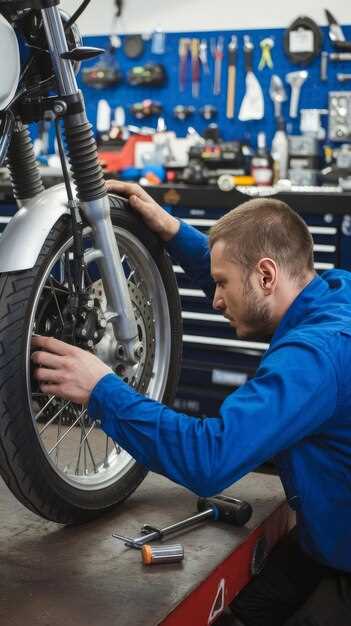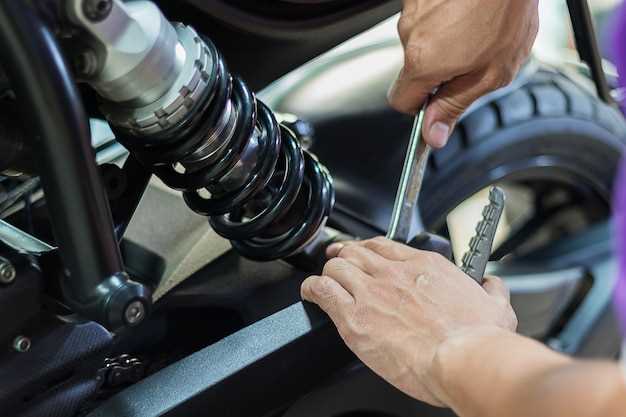

Understanding the basics of motorcycle components is essential for every rider. Whether you are a novice or an experienced motorcyclist, being familiar with the parts of your bike can significantly enhance your riding experience and ensure your safety on the road. Knowing how each piece functions contributes to effective maintenance, better performance, and an overall improved understanding of your motorcycle.
From the powerful engine that drives your bike to the intricate braking system that keeps you safe, every motorcycle contains crucial elements that work together seamlessly. This article will delve into the key components that every rider should be aware of, providing insights into their functions and importance. By equipping yourself with this knowledge, you can become a more informed and responsible motorcycle enthusiast.
Understanding the Role of the Engine in Motorcycle Performance

The engine is a critical component of any motorcycle, serving as the heart that powers its movement. Understanding the basics of how an engine functions can significantly influence a rider’s experience and performance on the road. Motorcycles typically use either a two-stroke or four-stroke engine, each offering unique characteristics that affect speed, torque, and fuel efficiency.
Two-stroke engines are known for their lighter weight and simpler design, providing quick acceleration and high RPM capabilities. However, they tend to consume fuel at a faster rate and produce more emissions compared to four-stroke engines. Conversely, four-stroke engines deliver higher torque at lower RPMs, making them ideal for long-distance rides and providing better fuel economy. This efficiency is a crucial factor for riders who often travel on highways or through varied terrains.
The engine size, measured in cubic centimeters (cc), also plays a pivotal role in motorcycle performance. Larger engines generally yield more power, enabling higher speeds and better handling of heavy loads. Conversely, smaller engines are easier to manage, making them suitable for new riders or those navigating urban environments.
Moreover, the engine’s configuration–such as single-cylinder, twin-cylinder, or multi-cylinder–affects the motorcycle’s power delivery and smoothness of ride. Multi-cylinder engines tend to provide a smoother operation with more consistent power throughout the rev range, enhancing rider comfort and control.
Ultimately, understanding the role of the engine allows riders to select a motorcycle that aligns with their riding style and needs. Whether prioritizing speed, fuel efficiency, or ease of handling, the engine type and specifications significantly impact overall performance and rider satisfaction.
How to Maintain and Replace Motorcycle Tires for Safety
Maintaining and replacing motorcycle tires is crucial for rider safety. Understanding the basics of tire care can significantly enhance your riding experience and prevent accidents. Regular inspections should be conducted to check for any signs of wear, such as cracks, punctures, or uneven tread. Replace tires that show significant wear or damage immediately to ensure safety on the road.
Proper inflation is another key part of tire maintenance. Under-inflated or over-inflated tires can lead to poor handling and decreased performance. Always refer to the manufacturer’s specifications for the correct tire pressure and monitor it regularly using a reliable gauge. Keeping tires adequately inflated can enhance grip and prolong tire lifespan.
Additionally, it is essential to rotate tires periodically. Rotating helps ensure even wear across all tires, extending their usability. This is particularly important for motorcycles that experience different wear patterns depending on their design and usage. Check the owner’s manual for recommended rotation intervals.
When the decision to replace tires arises, select high-quality options that suit your riding style and conditions. Consider factors such as tire type (sport, touring, off-road) and compound as they affect performance, handling, and safety. Always install tires that match your motorcycle’s specifications, ensuring compatibility with the bike’s performance parameters.
Lastly, after installing new tires, it’s advisable to balance them properly. Unbalanced tires can lead to vibrations, uneven wear, and compromise overall safety. Professional tire fitters can assist with balancing, helping maintain a smooth ride.
The Importance of Brake Systems in Motorcycle Safety

Brake systems are one of the most critical parts of any motorcycle, playing a vital role in ensuring the safety of the rider. Properly functioning brakes can prevent accidents, reduce stopping distances, and provide better control in various riding conditions.
Understanding the functionality and components of brake systems is essential for every motorcycle rider. Here are the key reasons why brake systems are crucial for motorcycle safety:
- Stopping Power: Brakes provide the necessary force to stop the motorcycle effectively. Disc brakes, for instance, offer superior stopping power compared to drum brakes, particularly in high-speed situations.
- Control and Stability: A well-functioning brake system allows riders to maintain control during deceleration. This stability is essential when navigating turns or avoiding obstacles on the road.
- Emergency Stops: In emergencies, the ability to stop the motorcycle quickly can mean the difference between a near miss and a serious accident. Effective brake systems enhance a rider’s ability to react swiftly.
- Weather Conditions: Different brake types perform variably in wet or slippery conditions. Understanding these differences helps riders choose motorcycles suited for specific environments.
Key components of motorcycle brake systems include:
- Brake Pads: These wear over time and should be checked regularly to ensure maximum effectiveness.
- Brake Rotors: Also critical to the braking process, they must be maintained to prevent warping or damage.
- Brake Fluid: This hydraulic fluid must be regularly replaced to ensure consistent performance.
- Calipers: They house the brake pads and play a vital role in applying pressure to the rotors.
Overall, the significance of brake systems cannot be overstated. Riders should prioritize regular maintenance and inspections of all brake components to maximize safety on the road. Knowledge of these crucial parts enhances rider preparedness and contributes to a safer riding experience.
